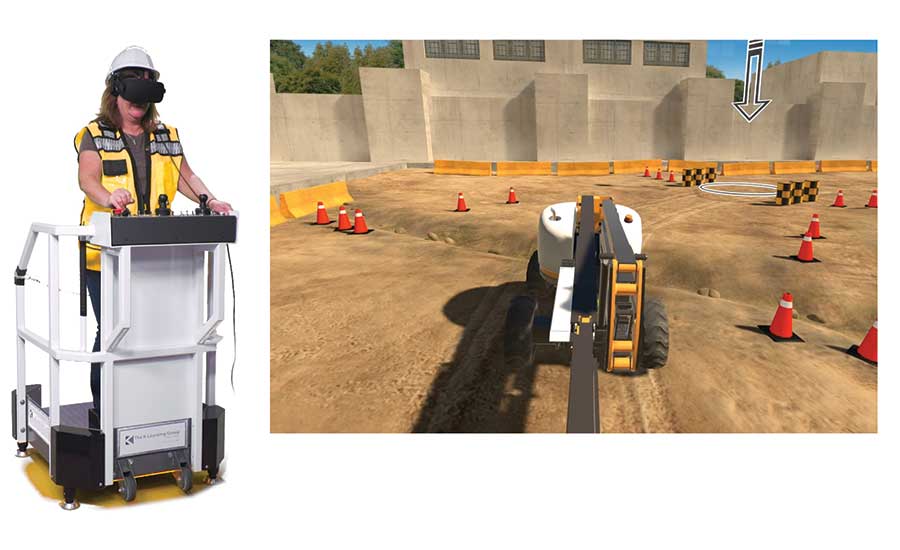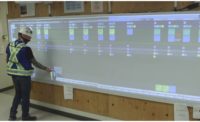As virtual reality technologies continue to evolve, construction trade unions are showing interest in incorporating them into apprenticeship training. A virtual training room is coming out of beta testing, and some unions have begun to acquire equipment simulators.
At the Iron Workers (IU) annual conference last year, the Kelly Cos. and Serious Labs demonstrated a virtual lift simulator and an early version of One Room, a collaborative VR training environment that will let multiple users work in the same space (ENR 10/23/17 p. 31). “We are looking at what’s out there right now,” says Michael Relyin, the IU’s general organizer for the apprenticeship and training department.
Relyin notes that some branches are using a virtual welder simulator from Lincoln Electric. “When the virtual welder first hit the market, it was expensive and you got a lot of people hesitant to utilize the opportunity,” he says. “Over time I’ve seen people start to realize the benefits of using it. I know that starting out a couple of locals used it.” He estimates that 30% of union chapters throughout the country are now using it.
The Painters Union has used virtual sprayers and welders for more than five years, says Thomas Pfundstein, director of curriculum and instruction for the Finishing Trades Institute. “We were at the forefront of utilizing [VR].”
Ken Rogers, director of knowledge distribution at the Kelly Cos., which provides online training systems for unions and associations through its K-Learning Group, says VR providers are looking to keep bringing costs down. For example, the virtual lift hardware and software is less than $100,000 now.
“The biggest concern is that after a year or two, if software updates are optional, then people may not go with it,” he says. “Multiple versions then have to be maintained—no updates or bug fixes. Then apprentices are training with dated equipment. We’re working with Serious Labs on separating that.” It may be that hardware will be a one-time purchase, then a subscription would come with a new computer every couple of years.
The aerial lift physical simulator is a big step forward for unions such as the Sheet Metalworkers, says Michael Harris, program director for International Training Institute. “VR training … a lot of it when it first came out, I would consider flashy,” says Harris. “This lift simulator was the first piece where I saw how it could be used in an actual training setting. It intrigued us. We’re in the process of purchasing one.”
The virtual welder can save a lot of energy and materials expended with real-world welding training, notes Relyin. “You get a lot more efficient feedback and training” than if one instructor is trying to check on multiple trainees, he adds. “Regarding OSHA standards, [VR’s role] is still in debate.”
Pfundstein adds that the VR scenarios are getting more realistic, and also notes cost savings. “Paint is expensive, even just for practice purposes,” he says.
Mark Wertz, national coordinator for the Boilermakers National Apprenticeship Program, says that while VR is not currently used in curriculum training, “we may want to pursue that type of training in the future, and [we] are currently seeking ways to make that happen.”
The Kelly Cos. is looking to incorporate virtual welding into the One Room space, says Rogers. “We’re building real-world scenarios, say glazing or window installation, to take into One Room so that trainees can work collaboratively with the safety guy, the instructor, etc.”
Rogers envisions a variety of future possibilities for VR training, including training workers to navigate a nuclear plant. “It’s just going to grow,” he says.
And from a recruitment standpoint, “VR has huge potential,” says Harris, noting that virtual welders have been a big hit at recruitment events. “We have a short time to make an impression. These kids are gamers.”



